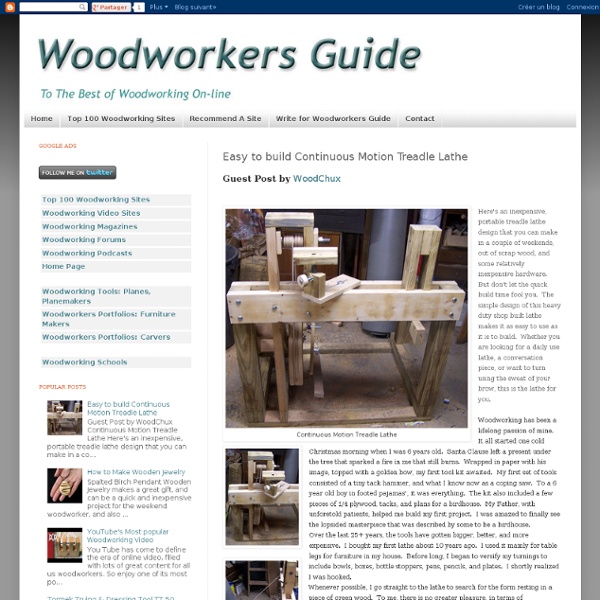



The Woodwrights Shop Please sign in using one of our supported services to begin saving your favorite programs and videos. We have updated our registration process. Please sign in using one of our supported services to bookmark your favorite programs and videos. If you have a PBS account, your stored favorites and viewing history will be safely migrated. By signing in, you are authorizing PBS to share your email address with your local PBS station to send you periodic communications about station events, services and support. Warning: Data migration for current PBS account holders is a one time only event.
Lutherie amateur • Afficher le sujet - FAQ "OUTILLAGE et consommables" Certains des sujets cités dans cette section sont des idées de création / modification / détournement d’outillages par vos propres moyens (DIY = Do It Yourself = Faites Le Vous Même). Ils sont cités dans la FAQ dans l’unique but de faciliter vos recherches et en aucun cas il ne s’agit d’une reconnaissance de la valeur de ces outils. Si néanmoins vous décidez de fabriquer de tels outils, ce sera en pleine connaissance de cause, sans aucune garantie, et sous votre entière responsabilité. De même, les outils à bois sont généralement très tranchants et parfois très puissants lorsqu'ils sont électriques, leur usage présente toujours des dangers et est soumis à l'observation de règles de sécurité. Sécurité Les machines à bois, ça coupe, mais pas que le bois... Généralités discussion générale : "quels outils pour se lancer ?" L’outillage Electrique La scie à ruban comment régler une lame de scie à ruban ? La meuleuse Dégrossir un galbe à la meuleuse... Les outils manuels